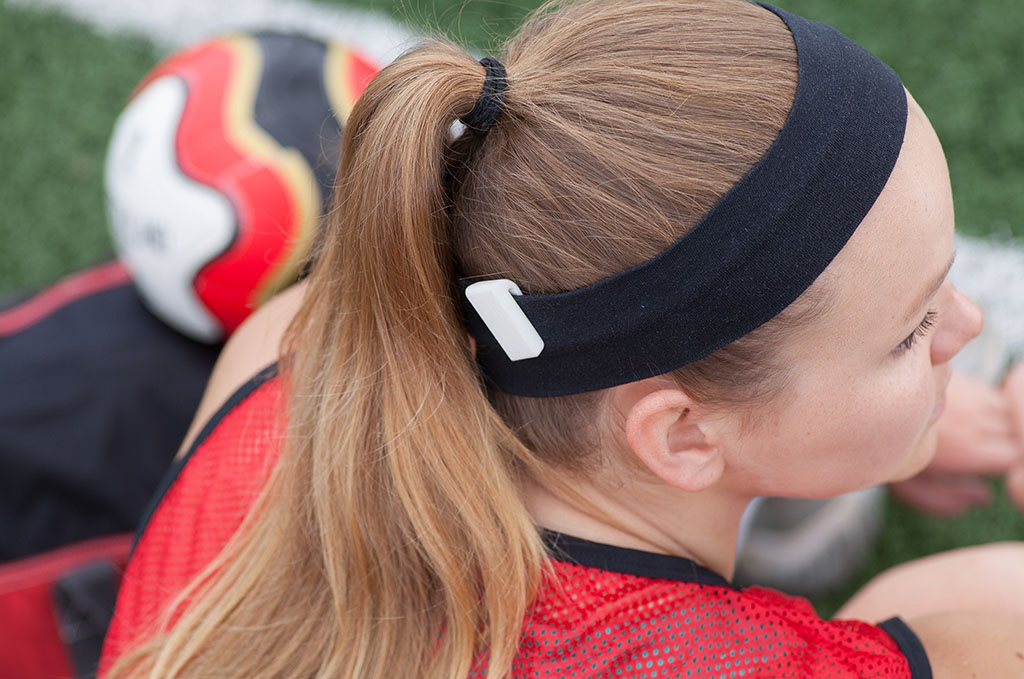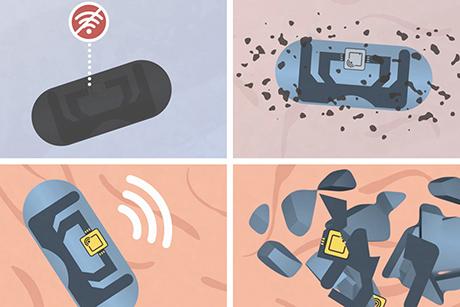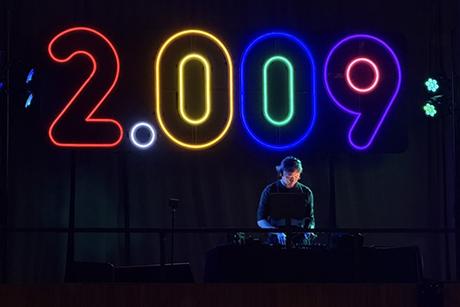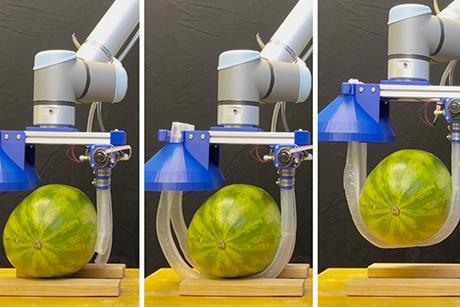When to get your head out of the game
Head injuries are a hot topic today in sports medicine, with numerous studies pointing to a high prevalence of sports-related concussions, both diagnosed and undiagnosed, among youth and professional athletes. Now an MIT-invented tool is aiding in detecting and diagnosing concussions, in real-time.
In 2007, the American College of Sports Medicine estimated that each year roughly 300,000 high school and college athletes are diagnosed with sports-related head injuries — but that number may be seven times higher, due to undiagnosed cases. One-third of sports-related concussions among college athletes went undiagnosed in a 2013 study by the National Institutes of Health. And the Centers for Disease Control and Prevention has consistently referred to the rise of sports-related head injuries as a national epidemic.
Last October, MIT alumnus Ben Harvatine ’12 — who suffered several head injuries as a longtime wrestler — started selling a wearable sensor for athletes, called the Jolt Sensor, that detects and gathers data on head impacts in real-time. Commercialized through Harvatine’s startup Jolt Athletics, the sensor is now being used nationwide by teams from grade-school to college levels, and is being trialed by professional teams.
“We’re trying to give parents and coaches another tool to make sure they don’t miss big hits, or maybe catch a hit that doesn’t look that big but measures off the charts,” Harvatine says.
Tracking impact
The Jolt Sensor is essentially a small, clip-on accelerometer that can be mounted on an athlete’s helmet, or other headgear, to measure any impact an athlete sustains. When the athlete receives a heavy blow, the sensor vibrates and sends alerts to a mobile app, which is monitored by coaches or parents on the sideline.
The app lists each player on a team wearing the sensor. Filtered to the top of the list are players that received the biggest hits, players with the most total hits, and players with above average hits compared to their past impacts. If a player sustains a hard hit, the player’s name turns red, and an alert appears telling the coach to evaluate that player. The app includes a concussion symptom checklist and cognitive assessment test.
“We can’t be overly diagnostic, but we do our best to communicate the urgency that that was a big hit and you need to check out the player,” Harvatine says.
By recording every impact, big or small, the app also creates impact statistics for each athlete. “You can watch how an athlete is trending — day to day, week to week, month to month — in terms of their total impact exposure, and mitigate high risk situations before they result in injury,” Harvatine says.
Several other concussion-monitoring sensors are currently available. But a key innovation of the Jolt Sensor, Harvatine says, is a custom communications protocol that allows an unlimited number of sensors to transfer data to the app from up to 200 yards away. “That gives us an unparalleled range,” he says. “You don’t have to chase your kids around the field with your phone to get those alerts. You can actually follow a whole team at once.”
Data: The voice of reason
Apart from developing the sensors, the startup, headquartered in Boston, is focusing on gathering and analyzing data, which could provide deeper, objective insights into concussions, Harvatine says.
Over the years, Harvatine has seen sports-related head injuries become increasingly polarizing in the U.S., especially among parents. Some parents, he says, deny concussions happen so frequently, while others say they’ll never let their kids play sports due to risk. By amassing data, Harvatine hopes Jolt Athletics can offer a scientific middle ground: “We’re trying to be that rational voice, saying, ‘Yes, there are risks in sports, but we can help you better understand that risk and intelligently mitigate it.’”
So far, the Jolt Sensor has uncovered a surprising frequency of big hits among kids as young as 10, Harvatine says. “We had a couple sensors that have registered so many hits, at such a high level, that we’ve contacted the owners to make sure we didn’t have a defective sensor,” he says. “Turns out, it’s just typical for that age range.”
Although that finding doesn’t come from a large data set, Harvatine has formed a hypothesis for why those young kids take such big hits. “They’re big enough, strong enough, and fast enough to put hard licks on each other, but not necessarily experienced enough that they’re in total control of their bodies,” he says. “That may be making that particular level of play a little more dangerous than the levels just before or just after.”
Getting knocked around — for science
Harvatine, who studied mechanical engineering at MIT, designed the Jolt Sensor for an class project, after a fateful incident: During a practice his junior year for MIT’s wrestling team, he suffered a concussion that went unnoticed. “I was feeling dizzy and nauseous, but I thought I was dehydrated, so I pushed through,” he says. “But by the end of practice, I was having trouble getting up, and I couldn’t pull words together.”
Harvatine ended up in the hospital with a months-long recovery that required dropping out of all classes for the fall semester. Upon returning to MIT the following spring, he enrolled in Course 2.671 (Measurement and Instrumentation), where he was charged with using a sensor to collect real-world data.
And he had a revelation. “I grabbed a bunch of accelerometers, strapped them to my wrestling headgear, and, much to my parents’ chagrin, went back to the wrestling mat to get knocked around and start gathering data,” he says.
In his fraternity house, Harvatine and classmate and Jolt Athletics co-founder Seth Berg ’14 designed the first Jolt Sensor prototype: a data-collection unit strapped around Harvatine’s waist, with wires running from the device, up his back, and connecting to accelerometers on his headgear. Everything had to be connected to a laptop.
During open gym hours, Harvatine wrestled with teammates while wearing the prototype — and collected some interesting data. Wrestling moves that generated the biggest blows didn’t involve direct impact to the head, but instead came from snapping his head back and forth. “We were doing a lot of drills that cause that type of impact, and it was something that I would’ve never worried about,” Harvatine says.
After graduating, Harvatine launched Jolt Athletics in 2013 to commercialize the sensor. While doing so, he received valuable advice from mentors at MIT’s Venture Mentoring Service, with whom Harvatine still keeps in contact today. “Honestly, I wouldn’t have had a clue what to do without VMS,” he says.
Additionally, Harvatine says, MIT classes like Course 2.008 (Design and Manufacturing II) and Course 2.009 (Product Engineering Processes) taught valuable lessons in product design and manufacturing, and in applying engineering skills to real-world applications. “Those are a couple of a long list of MIT courses I can point to that gave some useful insight into how the world works,” Harvatine says.



